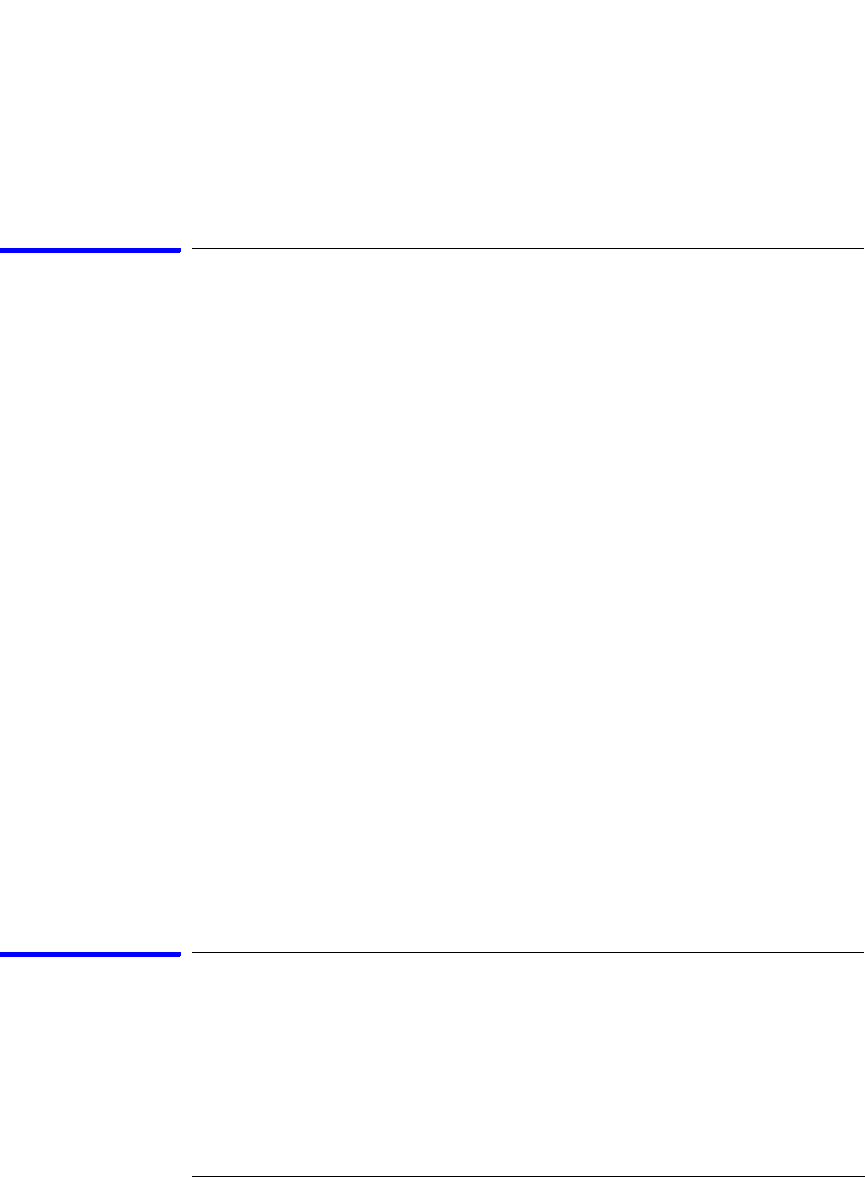User's Manual
Table Of Contents
- Agilent Technologies 16750A/B Logic Analyzer
- Agilent Technologies 16750A/B Logic Analyzer
- Contents
- Getting Started
- Step 1. Connect the logic analyzer to the device under test
- Step 2. Choose the sampling mode
- Step 3. Format labels for the probed signals
- Step 4. Define the trigger condition
- Step 5. Run the measurement
- Step 6. Display the captured data
- For More Information...
- Example: Timing measurement on counter board
- Example: State measurement on counter board
- Task Guide
- Probing the Device Under Test
- Choosing the Sampling Mode
- To select transitional timing or store qualified
- Formatting Labels for Logic Analyzer Probes
- Setting Up Triggers and Running Measurements
- Displaying Captured Data
- Using Symbols
- Printing/Exporting Captured Data
- Cross-Triggering
- Solving Logic Analysis Problems
- Saving and Loading Logic Analyzer Configurations
- Reference
- The Sampling Tab
- The Format Tab
- Importing Netlist and ASCII Files
- The Trigger Tab
- The Symbols Tab
- Error Messages
- Must assign Pod 1 on the master card to specify actions for flags
- Branch expression is too complex
- Cannot specify range on label with clock bits that span pod pairs
- Counter value checked as an event, but no increment action specified
- Goto action specifies an undefined level
- Maximum of 32 Channels Per Label
- Hardware Initialization Failed
- Must assign another pod pair to specify actions for flags
- No more Edge/Glitch resources available for this pod pair
- No more Pattern resources available for this pod pair
- No Trigger action found in the trace specification
- Slow or Missing Clock
- Timer value checked as an event, but no start action specified
- Trigger function initialization failure
- Trigger inhibited during timing prestore
- Trigger Specification is too complex
- Waiting for Trigger
- Analyzer armed from another module contains no "Arm in from IMB" event
- Specifications and Characteristics
- Concepts
- Understanding Logic Analyzer Triggering
- Understanding State Mode Sampling Positions
- Getting Started
- Glossary
- Index

194
Chapter 4: Concepts
Understanding Logic Analyzer Triggering
Special box Trigger point
--------------------- ------------------------------
Next: “Summary of Triggering Capabilities” on page 194
Summary of Triggering Capabilities
Because logic analyzer triggering provides a great deal of functionality,
the following table provides a brief summary of the capabilities covered
in this article. Each of these capabilities will be described.
Summary of Logic Analyzer Triggering Capabilities
Capability Examples
===================== ===============================================
Edges If there is rising edge on SIG1 then Trigger
If there is falling edge on SIG1 then Trigger
--------------------- -----------------------------------------------
Boolean expressions If ADDR = 1000 and DATA = 2000
--------------------- -----------------------------------------------
Ranges If ADDR in range 1000 to 2000
--------------------- -----------------------------------------------
Storage qualification 1. If..
Else If ADDR in range 1000 to 2000 then
Store Sample
Go to 1
Else If ADDR not in range 1000 to 2000 then
Don't Store Sample
Go to 1
--------------------- -----------------------------------------------
Counters 1. If DATA = 1000 Then
Increment Counter 1
Go to 2
2. If Counter 1 > 2 Then
Trigger
--------------------- -----------------------------------------------
Timers 1. If DATA = 1000 Then
Start Timer 1
Go to 2
2. If Timer 1 > 500 ns Then
Trigger
--------------------- -----------------------------------------------
Next: “Sequence Levels” on page 194
Sequence Levels
While logic analyzer triggers are often simple, they can require
complex programming. For example, you may want to trigger on the
rising edge of one signal that is followed by the rising edge of another
signal. This means that the logic analyzer must first find the first rising










